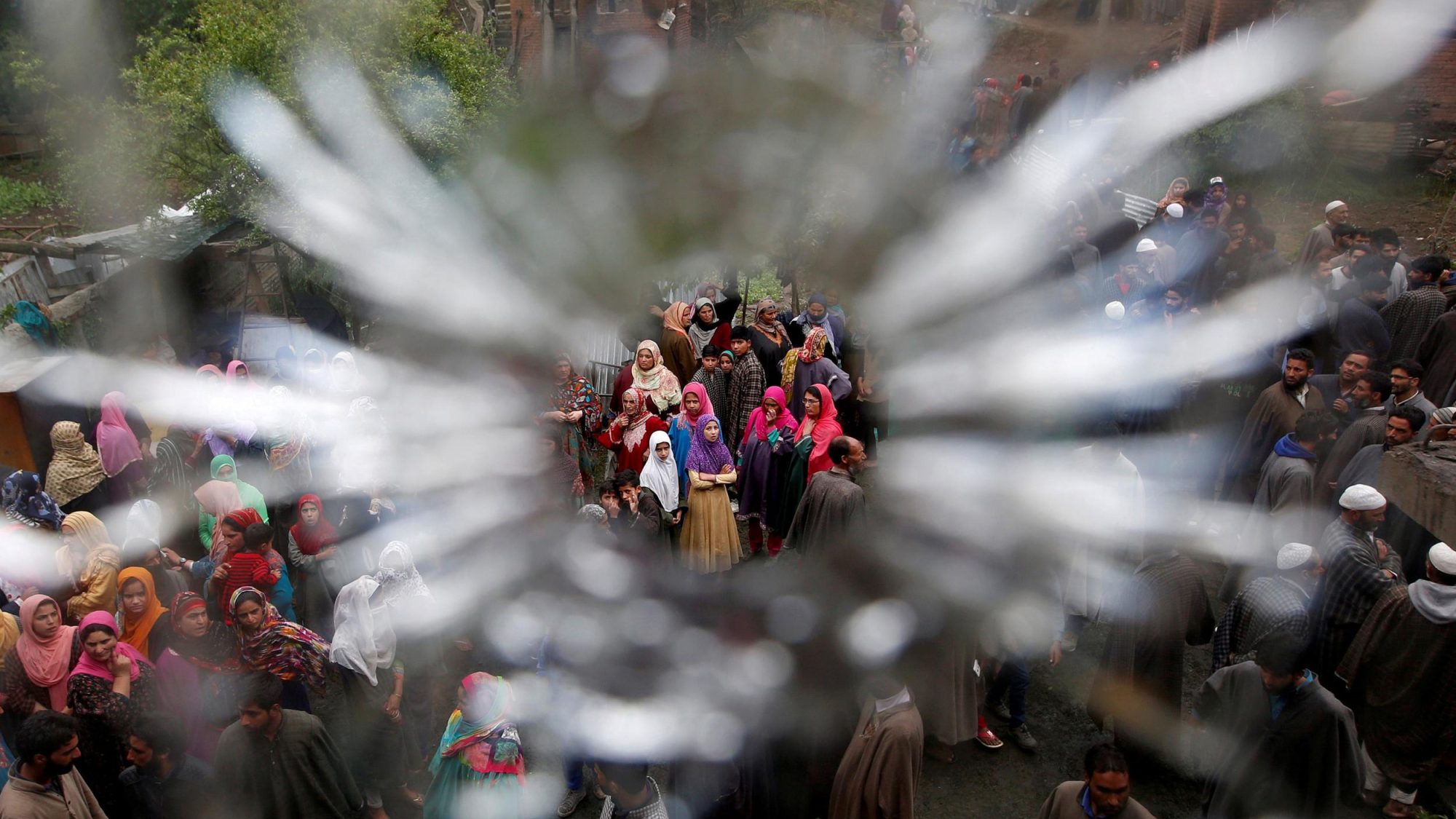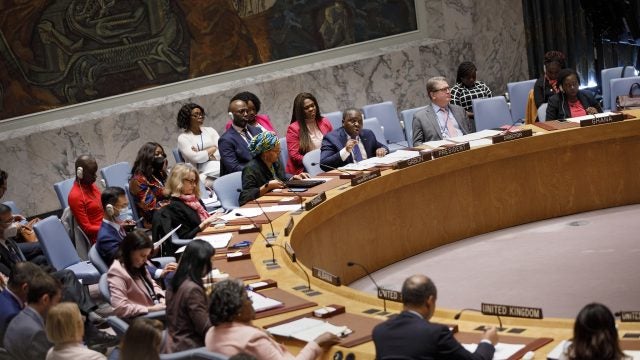
Title: India, Israel, and Geopolitical Imaginaries of Cooperation and Oppression
Portrayals of India and Israel as strategic partners or allies in the oppression of Kashmiris and Palestinians often suggest that India emulates Israel in how it manages oppression. Yet, the designation of Israel as a unique source of learning for oppression limits the recognition of the indigenous Indian nature of the long-standing ideological and technological infrastructures of occupation in Kashmir. We must eschew simplistic geopolitical imaginaries of cooperation and oppression and pay greater attention to the similarities as well as the differences across contexts.
The contemporary global moment requires us to be alert to the multiple trajectories of repression. Tactics and technologies circulate amongst and between democracies and authoritarian regimes. Russian and Chinese models of digital authoritarianism have been regionally exported, and there has been Indian and Chinese mutual learning on modalities of repression. These circulations occur along supra- and intra-statal pathways, and via traffic in both economically profitable weapons and ideologies. To attend to these trajectories, we must carefully examine the preferred narratives adopted by the states as well as those offered by resistance and solidarity movements across national boundaries. In this context, the relationship between India and Israel is notable for how the two countries are celebrated as friendly partners for strategic cooperation, or alternatively, critiqued as allies for the parallel oppressions of Kashmiris and Palestinians.
The ties between India and Israel present a systematic divergence between official accounts of these relations and the perspectives of critical resistance scholarship on Palestine and Kashmir. The official story in the media unsurprisingly focuses on the mutually fertile and growing cooperation between India and Israel as strategic partners at every level of investment from infrastructure, innovation, and defense to people-to-people interaction. The bilateral trade between the two countries has been steadily increasing, and apart from growth in collaborative ventures, there is the imminent possibility of the conclusion of longstanding negotiations on the Free Trade Agreement between the two countries. Then, there is the resonance at the level of political leadership. The meeting between Netanyahu and Modi was perceived as a bromance between these leaders of deeply illiberal projects; the right-wing majoritarian nationalist projects championed by the regimes in the two countries both portray themselves as beleaguered by Islamists and resolute in combating terrorism.
On the other hand, there is no dearth of critical narratives that point to Kashmir and Palestine as being symmetrical occupations; here the focus is on the ways in which the oppressed populations in both cases are Muslims and oppressors are non-Muslims. India is the largest buyer of Israeli weapons and Israel is the second largest supplier to India; Israeli drones are used in Kashmir (one unmanned aerial vehicle called the Heron was specially adapted for such use). Indian forces have used Israeli Tavor rifles in 2008, used Spice-2000 guidance technology in the aftermath of Pulwama attacks in Kashmir in 2019, and bought Pegasus from Israel that same year.
Although these two portrayals of India and Israel as strategic partners for cooperation or allies in the oppression of Kashmiris and Palestinians are manifestly different, they have one important point in common. Both these narratives (often explicitly) suggest that India copies from Israel in the ways in which it manages oppression.
The Indian Home Minister Amit Shah in a recent statement praised Prime Minister Modi for “annexing Kashmir with [the] rest of India,” referring to the abolition of Article 370 of the Indian Constitution on August 5, 2019 (Article 370 guaranteed Jammu and Kashmir’s autonomous status). In this context, he pointed to how India, in its ‘surgical strike’ response to Pakistan for the 2019 Pulwama attacks in Kashmir (carried out by an indigenous Kashmiri militant), has now joined the ranks of countries like Israel (and the US) that can “hit back at those meddling with their borders”. In the aftermath of the revocation of Kashmir’s autonomy, without consultation or consent, the Indian Consul General in New York Sandeep Chakravarty was filmed speaking to a gathering of Kashmiri Pandits (Kashmir’s Hindu minority) saying that there was a model for settlements in Kashmir, and that “If the Israeli people can do it, we can also do it.” Ironically, the Indian government officially rejects parallels between Kashmir and Palestine, maintaining that Kashmir is an internal matter, while recognizing Palestine as an international issue with a two-state solution.
On the other hand, advocacy groups, especially those that focus exclusively on the Indian oppression of Kashmiri Muslims (but not on repression in Pakistan or of other oppressed groups such as the Kurds where the oppressors are co-religionists), dwell on the topic of Muslims oppressed by India and Israel. They point to how Israel is the source model of oppression, due to its arms exports and its treatment of Palestinians.
Yet is it really the case that India imports its mechanisms of oppression from Israel? And what does this story obscure from view?
There is something deeply troubling about the designation of Israel as a unique source of oppression. There is absolutely no doubt that Israel is a small country yet spends 12 percent of its government budget on defense, a per capita spending significantly higher than all developed countries except the U.S. Similarly, Israel is a reliable ‘no questions asked’ supplier that sold arms to India after nuclear tests. Importantly, the subjugation and dehumaniation of Palestinians by the state of Israel is an internationally recognized fact. Moreover, as I pointed out in 2014 prior to the election of the Modi-led BJP in India, there is a ‘necropolitical’ exercise of sovereignty in Kashmir where the state has the power and the capacity to dictate who may live and who may die (necropolitics as articulated by Achille Mbembe refers to the subjugation of populations in this way). The Palestinian resistance movement and the global solidarity that it generates has been an inspiration for many people, including in Kashmir.
However, it is also important to recognise that formal diplomatic relations between India and Israel only go back 30 years. For most of its post-colonial era in the 20th century, India’s relationship with Israel was checkered to say the least. The considerations underpinning Nehruvian foreign policy meant that engagement with Israel was undertaken when necessary (such as when help was sought during wars with Pakistan, or when the intelligence agency RAW was set up), but without reciprocation via explicit ties. Long before the Modi regime’s current de-hyphenation strategy in relation to Israel and Palestine, India repositioned vis-a-vis Palestine and Israel in the aftermath of the Cold War. Today, Modi’s visit to Israel in 2017 (the first Indian Prime Minister to do so), and Foreign Minister Jaishanker’s ‘goosebumps’ when recalling it, are reiterated to illustrate a deep cooperation, alignment against terrorism, and relational warmth. However, it was not Israel that supplied India with the ideology or infrastructure of wide-ranging oppression as Kashmir’s autonomy was gradually eroded between the 1950s and 1980s. The political dispute was communalized under the still unclear circumstances of the exodus of Kashmiri Pandits, and Kashmir’s Muslim population was subjected to sexual violence, enforced disappearances, torture, and encounter killings (extra-judicial killings of civilians by the police or armed forces). Police and soldier-level training exchanges between Israel and India date mostly to the start of the 21st century; it was in the 1990s that Kashmiris were subjected to the most egregious nightmares by Indian security forces. Even in more recent times, India did not import pellet guns from Israel; these guns were used indiscriminately in Kashmir against protestors in the summer of 2016 and resulted in inflicting death and blindness on Kashmiri civilians.
The designation of Israel as a unique source of learning for oppression detracts from recognizing the indigenous Indian nature of long-standing ideological and technological infrastructures of occupation in Kashmir. It also fits comfortably into a vein of anti-semitism professed openly by some radical Islamists and others who see a ‘Jewish hand’ behind every political force they disagree with. The contemporary Hindutva Indian nationalism has historic roots in the beliefs of the RSS (Rashtriya Swayamsevak Sangh, the ideological parent of the ruling BJP), an organization whose leaders admired both Nazis and Zionists. The RSS was founded in 1925 and is therefore older than the state of Israel.
The nature of the territorial political dispute in Kashmir and Palestine is different, and while Palestine has international recognition, Kashmir barely makes headlines. India’s occupation in Kashmir proceeds through the use of coloniality as development, what I have elsewhere called ‘Econonationalism’ (the use of the supposedly liberatory idea of development to mask a dehumanizing subjugation). There have been conscientious objectors in the Israeli army, but not a single one so far in the Indian Army. The media in India is conspicuously state-centric and usually silent on dissent when it comes to Kashmir. The longest ever Internet shutdown in any democracy was perpetrated by India. Some in the IDF found India’s modus operandi in Kashmir excessive in 2010 (another summer when many young Kashmiri protestors were killed), and more recently, some Israelis have petitioned the Supreme Court to not train Indian officers accused of human rights abuse in Kashmir. In other words, the trope of Kashmir and Palestine being the same kind of occupation and India learning oppression from Israel is simplistic. Further, it invisibilizes the potential of solidarity between Israeli and Kashmiri human rights activists.
Kashmiris share aspects of the experience of dehumanization and the colonial exercise of power with Palestinians, but they also experience modalities of oppression—detention, surveillance, debility, censorship, intimidation—akin to those faced by Hong-Kongers, Uighurs, Tibetans, Kurds and others. The reference to the new ‘Middle Eastern Quad‘ includes not just Israel and India, but also the U.S. and the UAE. The economic and defense linkages are malleable across regimes and there is nothing unique about Israeli technologies used by India when the oppressed are Muslims in both cases; a number of Muslim countries buy surveillance infrastructures from Israel to repress their own populations. When it comes to digital authoritarianism, China is a key player, and its narrative of justifying repressive data governance through the distribution of entitlements also has much in common with India’s narrative on Kashmir, notwithstanding the regime type differences in the two countries.
Moving beyond the established frames of thinking about the global circulation of ideas and technologies of oppression, as well as building solidarity across movements for self-determination, statehood, human rights, or freedoms, is a complex and important endeavor. As the lines between democratic and authoritarian regimes become blurry (especially with de jure enactments of different levels of citizenship in many democracies), and electorally legitimated misogynist authoritarians shore up power in multiple Western and non-Western countries by combining neoliberalism and nationalism, we must eschew simplistic geopolitical imaginaries of cooperation and oppression and pay greater attention to the similarities as well as the differences across contexts.
…
Dr Nitasha Kaul (@NitashaKaul) is a multidisciplinary academic, novelist, and economist. She is an Associate Professor in Politics and International Relations at the Centre for the Study of Democracy, University of Westminster in London. Links to her books and all her written and spoken work are at www.nitashakaul.com.
Image Credit: Ubaidsardar, CC BY-SA 4.0
More News

This article explores the uncertain future of Arctic governance amid shifting global geopolitics. It argues that whether Washington and Moscow opt for confrontation or cooperation, multilateralism in the Arctic…

Twenty-five years ago, the United Nations Security Council adopted Resolution 1325, establishing a framework that underpins the Women, Peace, and Security (WPS) Agenda. The Resolution recognized both the…

When we analyze conflicts in the Middle East, we are not analyzing conflicts with isolated impacts but risks for global energy security. Recent conflicts in the Middle East have highlighted…